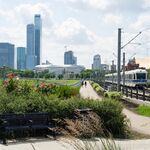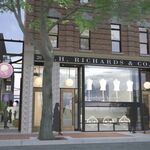A fair thought at this point. IIRC, modal share of biking, according to CoE numbers is only around 1-2%. the link
@CplKlinger shared is a great resource, (although i'm sure it's missing a bunch of counters, I know i've come across counters in the suburbs, but the map only shows them near the core; idk) and we know the counters don't catch most traffic, even on the lanes they're on, due to spacing. We don't catch any of the traffic in the Valley and ravines, which is where most riding happens recreationally (as well as a surprising amount of commuting, for those of us lucky enough to have the time in our day) nor do we have active counters on any of the SUPs in the suburbs. those are probably quiet, but they definitely see use and would fill out these usage numbers.
One number i've seen mentioned in documents attempting to account for this large blind-spot in the data estimates 50,000 bike trips a day in the summer. All-in. kids riding SUPs for fun, recreational riding, biking to store because it's sunny instead of driving etc.
right now it is kinda niche to bike. but it's doable, and i think there's more people riding out there than people think/see. expanding and improving our network will make riding more accessible, pleasant, and viable for people for any/all trips. In my eyes, it's a bit of a 'build it, and many more will come' thing.
I'll leave this here too. haven't seen the original source, so idk how credible this is, but I do agree that we actually have some good riding here in the city, at least when there's no snow!




